If your Windows laptop battery suddenly drops to 0%, then this post will help you fix this issue. A sudden battery percentage drop can be a frustrating issue because this causes a sudden shutdown of a laptop. Due to this, you lose your unsaved work. Both hardware and software issues are responsible for this problem.
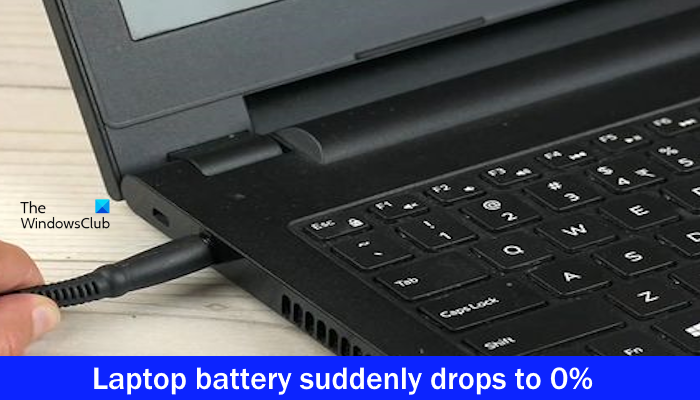
Fix Laptop battery suddenly drops to 0%
If your laptop battery drops to 0% suddenly, here are some fixes to help you resolve the issue:
- Hard reset your laptop
- Run Power troubleshooter
- Restore the default power plan
- Update or reinstall your battery driver
- Roll back your battery driver
- Check your battery health
- Calibrate your laptop battery
- Update the BIOS
- Your battery might be faulty
Let’s start.
1] Hard reset your laptop
The first step that you should do is perform a hard reset. Sometimes, the problem occurs due to the residual charge. This process will drain out all the residual charge from the capacitors. Follow the steps provided below:
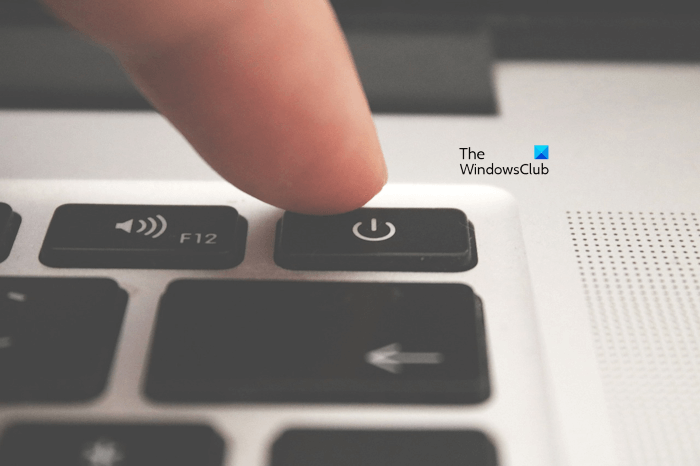
- Turn off your laptop completely (if it is turned on).
- Disconnect all the peripherals and the charger from your laptop.
- Remove the battery. If your laptop has a non-removable battery, you can skip this step.
- Press and hold the power button for up to 30 seconds.
- Insert the battery and reconnect the charger.
- Turn on your laptop and check if it brings any changes.
2] Run Power troubleshooter
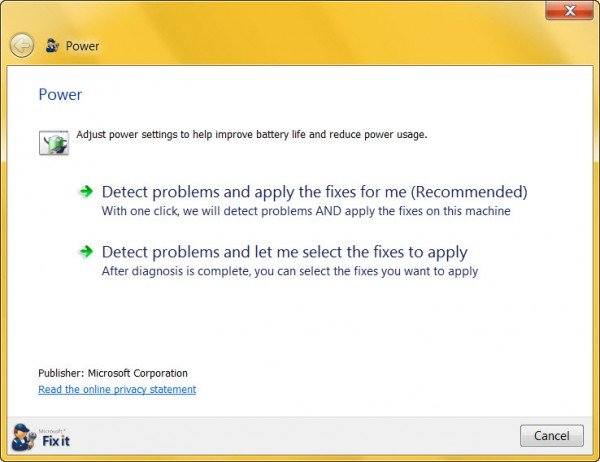
You can Run the Power troubleshooter to fix the battery drop issue. This action will scan your system for common power-related issues.
3] Restore the default power plan
Restoring the default power plan can help to fix the issue. If you have created a new power plan or edited the default power plan settings on your PC, restore your power plan settings to default and see if this helps. Use the following steps to restore your power plan settings to default:
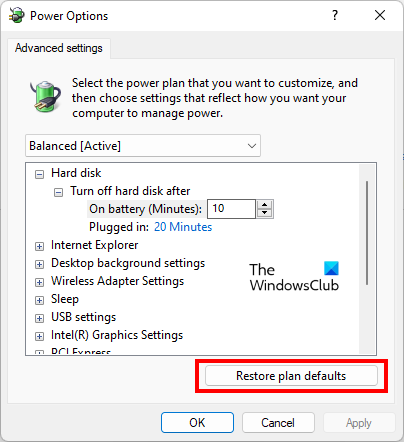
- Open the Control Panel.
- Go to the Power Options.
- Select your power plan and click on the Change plan settings.
- Now, click on the Change advanced power settings.
- The Power Options window will appear. Click Restore plan defaults.
- Click Apply and then click OK.
4] Update or reinstall your battery driver
An outdated or corrupted battery driver can cause the issue. You can try to reinstall the battery driver. Follow the steps provided below:
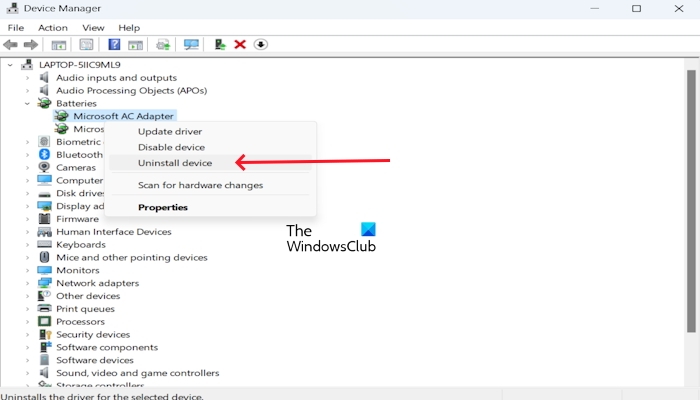
- Go to the Device Manager.
- Expand the Batteries section.
- Right-click on your battery driver and click on Uninstall device.
To reinstall the battery driver, restart your PC. Your driver will automatically be installed.

Also, you can do a Scan for hardware changes to reinstall your battery driver. To do so, click on the Action tab and click on Scan for hardware changes.
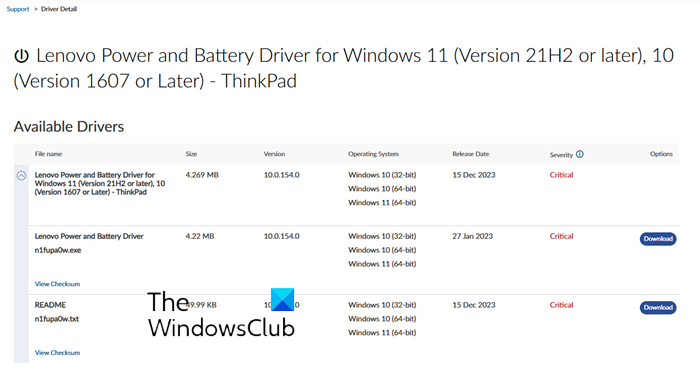
You can also download the latest Battery driver from the official website of your laptop manufacturer (if available) and install it.
5] Roll back battery driver
Sometimes battery issues can occur after a certain Windows Update, you can try rolling back your display driver. To do so, use the below steps:
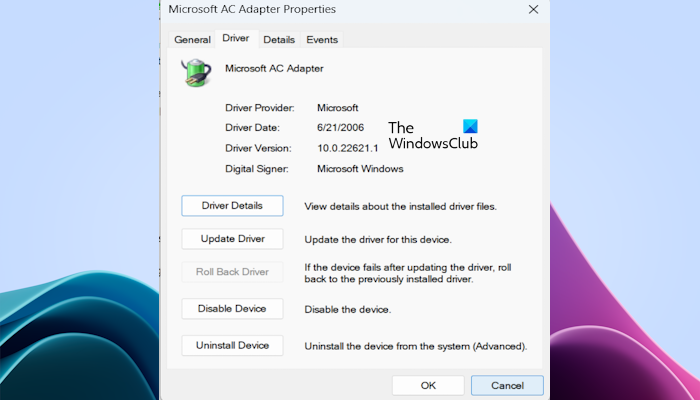
- Go to the Device Manager.
- Expand the Batteries section.
- Right-click on your battery driver and select the Properties option.
- Select the Driver tab.
- Check if the Roll Back Driver button in your battery driver properties is clickable or not. If yes, click on that button.
- Follow the on-screen instructions.
- Restart your computer.
Now, check if it brings any changes.
6] Check your battery health
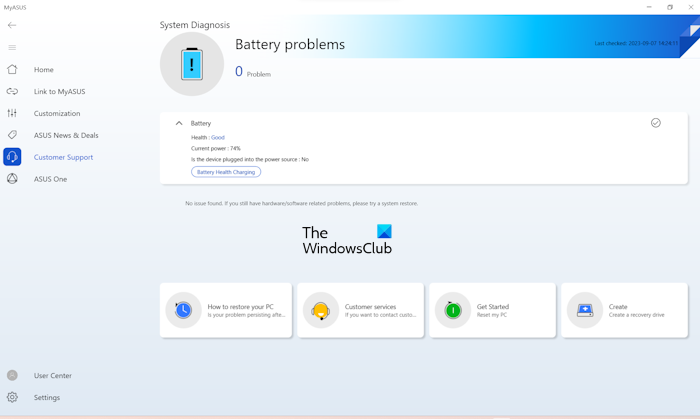
You can also check your battery health. This will help you know whether your laptop battery is working fine or not. For this, you can install free battery test software. Or, many computer manufacturing brands provide dedicated software. These tools or software help users keep their systems healthy by installing the required updates. You can also install these tools or software to test the health of your battery or run a battery health checkup. Some of these tools are:
You can also generate a Battery Health or Energy Report with Power Efficiency Diagnostic Report Tool.
7] Calibrate your Laptop battery
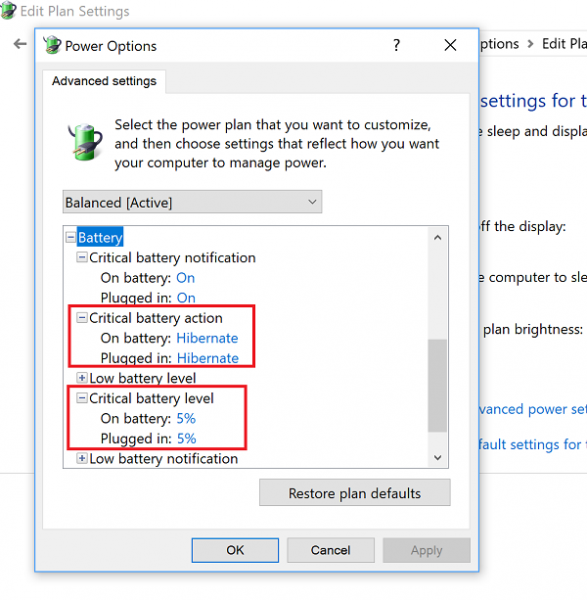
This is one of the best options if the battery suddenly drops to 0%. Windows only estimates the battery remaining time depending on the laptop usage and assumes you will continue using it the same way. As the laptop usage changes, the estimation changes accordingly. Though this estimation is nearly accurate, if you see a sudden drop in the battery remaining time and percentage while using the laptop, then you can calibrate the laptop battery manually.
8] Update the BIOS
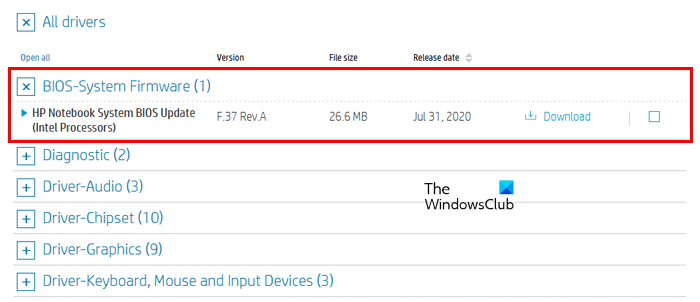
We also suggest you check for BIOS updates. Before updating the BIOS, you need to check the version of BIOS from the System Information or Command Prompt. If an update is available, install it. You can download the latest BIOS update from the official website of your computer manufacturer.
9] Your battery might be faulty

If none of the solutions work for you, then there is a possibility that your battery is faulty. In this case, we suggest you replace your battery. Before any repairs or replacements, ensure your important files are backed up to avoid data loss. Get professional help to confirm whether your battery is faulty or not.
Read: Laptop Battery Usage Tips & Optimization Guide
Why is my laptop battery shutting down suddenly?
There can be a few reasons why your laptop battery suddenly shuts down. Some of the most common reasons are a faulty battery and outdated or corrupted battery drivers. To fix this issue, you can perform some troubleshooting like running a Power troubleshooter, calibrating your battery, etc. Make sure your BIOS and battery drivers are up to date. Also, check the battery health by installing free battery test software.
Read: How to fix Battery drain issues in Windows
Does Battery Saver work on PC?
Yes, Battery Saver does work on PCs. It is a feature available on Windows 11/10 laptops that helps you conserve battery life when your laptop is not plugged in. When you enable the battery-saver feature, it blocks apps running in the background. You can still allow specific individual apps to run while in battery saver mode. In Windows, you can choose to enable a battery saver when the battery level reaches a certain percentage.
Read next: Laptop Battery Plugged in but Charging slowly or Not charging.